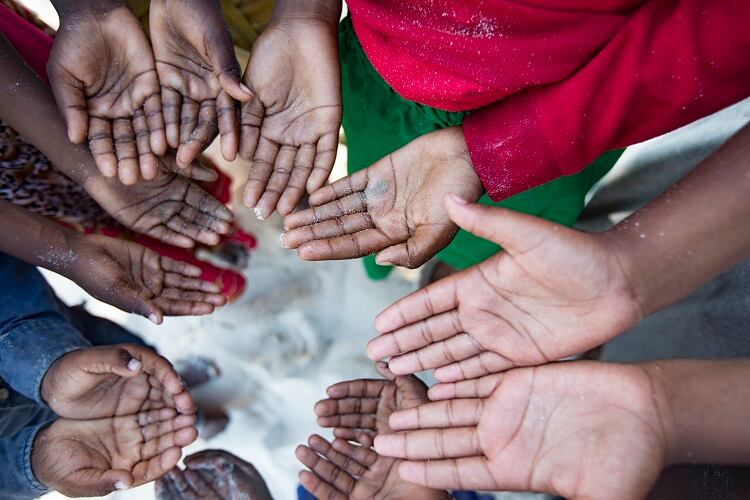In 2012, the UN World Health Organization (WHO) set a list of six global nutrition targets for its Member States to achieve by 2025.
These include a 40% reduction in the number of children under five-years who are stunted, achieving a 50% reduction in low birth weight, and reducing and maintaining childhood wasting to less than 5%.
Now, with less than five years to go, an international team of researchers doubt a majority of low- and middle-income countries (LMICs) will achieve the WHO’s global nutrition targets.
Child growth failure
Millions of children under the age of five are undernourished, and consequently, have stunted growth.
According to a 2018 UN report, one out of nine people in the world experience hunger, totalling more than 821 million people around the world.
Of these 821 million, 514 million lived in Asia, more than 256 million in Africa, and 42 million in Latin America and the Caribbean.
In the same year, WHO data revealed that 45% of mortality among children under five is due to malnutrition, with 3.1 million children dying of hunger per year.
Child growth failure (CGF), caused by malnutrition, is expressed as stunting, wasting, and underweight. However, it can also lead to cognitive and physical development impairments.
“Childhood malnutrition is an essential reason for children’s vulnerability to infections and, accordingly, their high mortality,” said Vasily Vlassoy from the Higher School of Economics in Moscow, Russia.
“This is not a temporary suffering in childhood, but a tragedy for [their] whole future life. Malnutrition decreases an individual’s ability to learn.”
Mapping CGF indicators
Vlassoy is part of an international team of researchers that mapped estimates of CGF indicators in countries where 99% of affected children live. Indicators were assessed from 2000 to 2017 across 105 low- and middle-income countries.
The researchers observed ‘remarkable declines’ over the study period as well as ‘large disparities in prevalence and progress’ across and within the WHO Member States.
Notably, estimated childhood stunting prevalence decreased from 36% to 26% during the 17-year period. Yet in 2017, 176 million children were deemed ‘shorter than medical standards presume for their age’. Approximately 50% of these kids lived in India, Pakistan, Nigeria and China.
Countries in Central America, the Caribbean, North Africa, and East Asia made the most progress in combatting childhood stunting, having reduced from at least 50% to 30% or less by 2017.
Up to 40% of children under five were affected by stunting in 2017 in sub-Saharan regions, Central and South Asia, and Oceana.
“Our maps identify high-prevalence areas even within nations otherwise succeeding in reducing overall CGF prevalence,” they noted.
Concerning wasting, or low body weight indices, 58.3 million children across the 105 countries were affected in 2017, demonstrating a 2% reduction from 2000.
A majority of children suffering from wasting lived in India, Pakistan, Bangladesh, and Indonesia, whereas the ‘highest shares’ of children with wasting were found in Africa.
Underweight in children similarly declined – from close to 20% in 2000 to 13% in 2017. Greatest improvements noted in Central and South America, sub-Saharan Africa, North Africa and Southeast Asia.
‘Ambitious’ targets unattainable
Overall, CGF was found to be spread unevenly across the 105 nations. Interestingly, the mapping identified high-prevalence areas within countries found to be otherwise succeeding in reducing overall CGF prevalence.
“By highlighting where the highest-need populations reside, these geospatial estimates can support policymakers in planning interventions that are adopted locally and in efficiently directing resources towards reducing CGF and its health implications,” noted the authors.
The research revealed that ‘commendable’ declines in CGF occurred globally over the 17-year-period. However, such progress – measured at a ‘coarse scale’ – hides subnational and local underachievement in achieving the WHO’s ‘ambitious’ targets.
Most LMICs will not reach WHO’s global nutrition targets, the researchers predicted, with ‘even fewer’ expected to meet targets across subnational units.
“Our mapped results show broad heterogeneity across areas and reveal hotspots of persistent CGF even within well-performing regions and countries, where increased and targeted efforts are needed,” they noted.
“Regardless of overall declines, many subnational areas across LMICs maintained high levels of CGF and require substantial acceleration of progress or reversal of increasing trends to meet nutrition targets and leave no populations behind.”
Source: Nature
‘Mapping child growth failure across low- and middle-income countries’
Published 8 January 2020
DOI: http://dx.doi.org/10.1038/s41586-019-1878-8
Authors: D.K. Kinyoki, A.E. Osgood-Zimmerman, B.V. Pickering et al.




